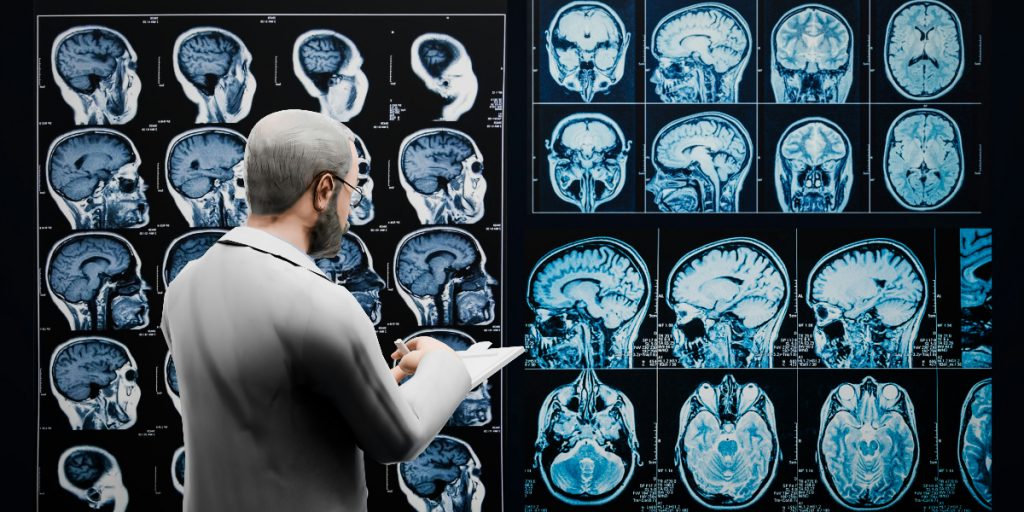James Tabery is a professor of philosophy at the University of Utah and a member of the Center for Health Ethics, Arts, & Humanities. His research has been reported in the New York Times, National Geographic, Time, and on National Public Radio.
Below, James shares five key insights from his new book, Tyranny of the Gene: Personalized Medicine and Its Threat to Public Health. Listen to the audio version—read by James himself—in the Next Big Idea App.

1. Personalized medicine is just marketing lingo for genomic medicine.
Personalized medicine is typically characterized as a comprehensive view of people and what makes them sick or healthy—their biological makeup, the environments to which they’ve been exposed, and their lifestyle choices. In fact, personalized medicine is almost entirely about one thing: genes.
Erlotinib—considered one of personalized medicine’s great success stories in the fight against lung cancer—wasn’t a good match for my dad because of the air that he breathed, or the food that he ate, or the fly fishing that he did each spring. Erlotinib was a good match for my dad because of the molecular-genetic profile of the cancer cells in his body. This is something that we see everywhere that personalized medicine is deployed. Go open a personalized medicine journal, or check out a book about personalized medicine from your local library, or pop your head in on a personalized medicine conference. What you’ll see there are people talking about DNA.
The right treatment, for the right patient, at the right time has always been about using the DNA in our bodies to determine what’s right. The very term “personalized medicine” was developed by pharmaceutical executives as a marketing slogan in the 1990s, designed to sell investors and the public on the power of infusing genetics into the drug industry. We’re now all living in a world where that pharmaceutical marketing slogan has become the catchphrase for a revolution that tends to hide the reductionistic, genetic bias at its core.
2. Personalized medicines are extremely expensive.
Personalized medicine advocates hail its potential to drive down the costs of healthcare. It sounds good in theory, but there’s a problem with it in reality. The problem is that personalized medicines are among the priciest pharmaceutical treatments in existence. There’s a very natural biological explanation for this. Personalized medicine works by carving up patient populations into smaller and smaller subgroups based on their molecular-genetic profiles. This leads to what economists call market segmentation—fewer consumers for any given personalized medicine therapy. The primary goal of the private companies that develop those therapies is to turn a profit, so they drastically increase the prices of the products that they manufacture in order to offset the limited pool of users.
“Patients can find themselves forced to decide between foregoing treatment or selling their home.”
We saw this firsthand with my father. The bills for his surgeries, biopsies, hospital stays, physical therapy, and radiation were staggering. The real shocker, though, was the erlotinib. A one-month supply of those tiny pills was priced at over $5,000. A number of other personalized medicines for lung cancer have been approved since my father was diagnosed; these run in the $10,000 to $20,000 per month range. List prices of $50,000 per month aren’t uncommon for personalized medicines, and some one-time-use drugs are even billed at over $3,000,000.
Oncologists have long warned their patients about the potentially toxic side effects of treatments designed to combat cancer: a compromised immune system, hair loss, nausea, and anemia. The arrival of personalized medicines has led to a new side effect about which physicians now caution their patients: financial toxicity. Patients can find themselves forced to decide between foregoing treatment or selling their home, losing their life’s savings, or going bankrupt.
3. Health disparities are caused by our environments, not our genes.
Our society is plagued by unjust health inequities. Communities of color die younger, have higher rates of infant and maternal mortality, and carry a heavier disease burden for all sorts of chronic illnesses like high blood pressure, diabetes, and heart disease. Proponents of personalized medicine are now actively recruiting in those communities of color, promising people that participation in the genetic research can combat the health disparities that are ravaging them and their loved ones.
The problem with this reasoning, though well-intentioned, is that decades of scientific research have made it clear that health disparities are caused by things in our physical and social environments, not in our genes. Communities of color are exposed more often to discrimination in the workplace, to environmental toxins, and to housing insecurity; and they less often have access to walkable neighborhoods, clean air, and reliable healthcare.
Take lung cancer. The best chance of surviving a lung cancer diagnosis has always been catching it early and surgically removing it before it spreads. But physicians have known for decades that Black patients receive these life-saving surgeries less often than white patients, with deadly consequences. Now jump to the present and the era of personalized medicine. Studies have shown that Black patients are less likely to get tested to see if they’re a good match for a drug like erlotinib. Black people aren’t dying of lung cancer at higher rates than white people because they have a particular gene that makes them susceptible to lung cancer. They’re dying at higher rates of lung cancer because they live in a world that places Black people in environments where the air is less safe to breathe and then treats Black people with lung cancer differently than white people with lung cancer.
4. Genuine personalized medicine cures are few and far between.
In the summer of 2012, about a year after my father was first diagnosed with lung cancer, he went in for a routine screening. I can still hear the tears in my mother’s voice as she was conveying the news. The scans revealed that his cancer was growing again. Erlotinib and drugs like it don’t eradicate cancer. What they do is temporarily halt its growth and spread. Eventually, though, the cancerous cells evolve and develop a resistance to the treatments, and when they do that, they jump back to life. My dad never regained the ability to walk. His health deteriorated quickly, and he died shortly thereafter.
“For a very high price, it held a terminal illness at bay for a short period of time.”
Personalized medicine advocates foresee a future where medical magic bullets and biomedical breakthroughs are the norm across healthcare. But even in its flagship domain of cancer care, genuine cures are actually quite rare. Most often, when they do work, they’re just extending life for very sick people by a few months.
There’s no way to say how much time erlotinib added to the end of my dad’s life, but there’s every reason to believe that it allowed him to live longer. I’ll always cherish that time with him, and I’m grateful for it. But I also remind myself that erlotinib didn’t save him. For a very high price, it held a terminal illness at bay for a short period of time, and even that benefit isn’t available to everyone equally.
5. Our focus should be on making our environment safe for everyone.
There’s still no cure for lung cancer, despite the millions of patients diagnosed with it every year and the billions of dollars invested in developing new, expensive treatments. The good news, though, is that rates of lung cancer have steadily declined for decades now. But that’s not because of some pharmaceutical miracle pill. It’s due to ingenious public health research and effective public health interventions designed to make our world more lung-friendly: radon remission systems, asbestos abatement programs, and antismoking campaigns.
Lung cancer isn’t unique in this regard. For just about any disease that you can imagine, taking steps ahead of time to prevent the development of that illness is both more cost-efficient and more medically effective than trying to cure it once it’s arisen. It’s easy to take for granted how important it is to have access to a nutritious diet, how dangerous it is to come into sustained contact with pesticides, how hazardous it is to expose children to lead, and how essential it is to lay a baby to sleep on her back. But those realizations were all once points of contention that were settled by public health research that attended to the impact of the environment on our health.
Proponents of personalized medicine hail its departure from one-size-fits-all healthcare. That’s its big selling point. But the most harmful things in our environments—automobile exhaust, factory smog, housing insecurity, infectious diseases, and highly processed foods, to name just a few—really are bad for everyone. That’s why the health and economic impact of addressing them is so great: everyone benefits, not just the folks with the right genes, the right skin color, or the right bank account balance.
Healthcare is in the midst of a massive swerve towards genetics, packaged under the attractive label of “personalized medicine.” There are political, financial, and technological forces behind this purported revolution, and it’s a revolution about which we should all be wary.
To listen to the audio version read by author James Tabery, download the Next Big Idea App today:































